 W
WThe U.S. Army Coast Artillery Corps (CAC) was an administrative corps responsible for coastal, harbor, and anti-aircraft defense of the United States and its possessions between 1901 and 1950. The CAC also operated heavy and railway artillery during World War I.
 W
WThe 265th Air Defense Artillery Regiment is an air defense artillery regiment in the Florida Army National Guard. The unit was formed 19 October 1923 in the Florida National Guard as the 1st Separate Battalion, Coast Artillery Corps. It was reorganized and redesignated as the 265th Coast Artillery Regiment (CA) (HD) in 1929. The 265th was activated for World War II and served in the harbor defenses of Galveston, Texas, Los Angeles, California, Key West, Florida, Sandy Hook, New Jersey, and Alaska until broken up into battalions in July 1944. The unit lineage was carried by two antiaircraft battalions organized in 1946, one of which was federalized in Florida during the Korean War. Consolidated with other units in 1959 as the 265th Artillery; reorganized in 1987 as the 265th Air Defense Artillery.
 W
WFort Heath was a US seacoast military installation for defense of the Boston and Winthrop Harbors with an early 20th-century Coast Artillery fort, a 1930s USCG radio station, prewar naval research facilities, World War II batteries, and a Cold War radar station. The fort was part of the Harbor Defenses of Boston and was garrisoned by the United States Army Coast Artillery Corps. The fort's military structures have been replaced by a residential complex, including the luxurious Forth Heath Apartments, and recreation facilities of Small Park, which has both a commemorative wall and an historical marker for Fort Heath.
 W
WIn the U.S. Army Coast Artillery Corps, the term fire control system was used to refer to the personnel, facilities, technology and procedures that were used to observe designated targets, estimate their positions, calculate firing data for guns directed to hit those targets, and assess the effectiveness of such fire, making corrections where necessary.
 W
WFrank W. Coe was a major general in the United States Army. He is notable for having served as the Chief of Coast Artillery.
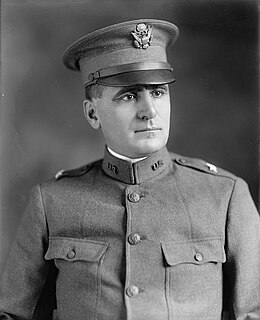 W
WWilliam Edward Cole was a decorated officer in the United States Army with the rank of Major General. He distinguished himself as training officer and Commander of 11th Field Artillery Brigade and received Army Distinguished Service Medal.
 W
WThe depression range finder (DRF) was a fire control device used to observe the target's range and bearing to calculate firing solutions when gun laying in coastal artillery. It was the main component of a vertical base rangefinding system. It was necessitated by the introduction of rifled artillery from the mid-19th century onwards, which had much greater ranges than the old smoothbore weapons and were consequently more difficult to aim accurately. The DRF was invented by Captain H.S.S. Watkin of the Royal Artillery in the 1870s and was adopted in 1881. It could provide both range and bearing information on a target. The device's inventor also developed a family of similar devices, among them the position finder, which used two telescopes as a horizontal base rangefinding system, around the same time; some of these were called electric position finders. Some position finders retained a depression range finding capability; some of these were called depression position finders. Watkin's family of devices were deployed in position finding cells, a type of fire control tower, often in configurations that allowed both horizontal base and vertical base rangefinding. Watkin's system included automatic electrical updating of range and bearing dials near the guns as the position finders were manipulated, and a system of remotely firing the guns electrically from the position finding cell. The improved system was trialled in 1885 and widely deployed in the 1890s. Functionally equivalent devices were developed for the United States Army Coast Artillery Corps and its predecessors, called depression position finders or azimuth instruments depending on function, adopted in 1896 and deployed widely beginning in the early 1900s as the Endicott program of modern coastal defences was built. These devices were also used by both countries to control submarine (underwater) minefields.
 W
WJoseph Andrew Green was a United States Army officer with the rank of Major General, who is most noted as a Chief of the Coast Artillery Corps during the years 1940-1942.
 W
WJohn W. Gulick was a career officer in the United States Army. He attained the rank of major general, and was most notable for his service as Chief of the Coast Artillery Corps.
 W
WThe Bermuda Base Command was a command of the United States Army, established to defend the British Colony of Bermuda, located 640 miles off Cape Hatteras, North Carolina. It was created in April 1941 when United States Army troops were sent to the island.
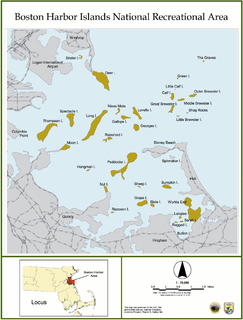 W
WThe Harbor Defenses of Boston was a United States Army Coast Artillery Corps harbor defense command. It coordinated the coast defenses of Boston, Massachusetts from 1895 to 1950, beginning with the Endicott program. These included both coast artillery forts and underwater minefields. The command originated circa 1895 as the Boston Artillery District, was renamed Coast Defenses of Boston in 1913, and again renamed Harbor Defenses of Boston in 1925.
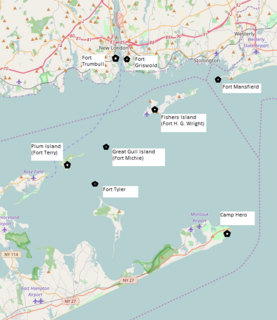 W
WThe Harbor Defenses of Long Island Sound was a United States Army Coast Artillery Corps harbor defense command. It coordinated the coast defenses of Long Island Sound and Connecticut from 1895 to 1950, beginning with the Endicott program. These included both coast artillery forts and underwater minefields. The area defended included the approach via the Sound to New York City, the port cities and manufacturing centers of New London, New Haven, and Bridgeport, and eventually included the submarine base and shipyard in Groton. The command originated circa 1900 as an Artillery District, was renamed Coast Defenses of Long Island Sound in 1913, and again renamed Harbor Defenses of Long Island Sound in 1925.
 W
WThe Harbor Defenses of Narragansett Bay was a United States Army Coast Artillery Corps harbor defense command. It coordinated the coast defenses of Narragansett Bay and Rhode Island from 1895 to 1950, beginning with the Endicott program. These included both coast artillery forts and underwater minefields. The command originated circa 1895 as an Artillery District, was renamed Coast Defenses of Narragansett Bay in 1913, and again renamed Harbor Defenses of Narragansett Bay in 1925.
 W
WThe Harbor Defenses of New Bedford was a United States Army Coast Artillery Corps harbor defense command. It coordinated the coast defenses of New Bedford, Massachusetts and the nearby Cape Cod Canal from 1900 to 1950, beginning with the Endicott program. These included a coast artillery fort and an underwater minefield. The command originated circa 1900 as the New Bedford Artillery District, was renamed Coast Defenses of New Bedford in 1913, and again renamed Harbor Defenses of New Bedford in 1925.
 W
WThe Harbor Defenses of New York was a United States Army Coast Artillery Corps harbor defense command. It coordinated the coast defenses of New York City from 1895 to 1950, beginning with the Endicott program, some of which were located in New Jersey. These included both coast artillery forts and underwater minefields. The command originated circa 1895 as an Artillery District(s) and became the Coast Defenses of Eastern New York and Coast Defenses of Southern New York in 1913. Circa 1915 the Coast Defenses of Sandy Hook separated from the latter command. In 1925 the commands were renamed as Harbor Defense Commands, and in 1935 the Harbor Defenses of Eastern New York was almost entirely disarmed, although possibly retaining the minefield capability. The New York and Sandy Hook commands and the Harbor Defenses of Long Island Sound were unified as the Harbor Defenses of New York on 9 May 1942.
 W
WThe Harbor Defenses of Portland was a United States Army Coast Artillery Corps harbor defense command. It coordinated the coast defenses of Portland, Maine, the mouth of the Kennebec River, and surrounding areas from 1895 to 1950, beginning with the Endicott program. These included both coast artillery forts and underwater minefields. The command originated circa 1895 as the Portland Artillery District, was renamed Coast Defenses of Portland in 1913, and again renamed Harbor Defenses of Portland in 1925.
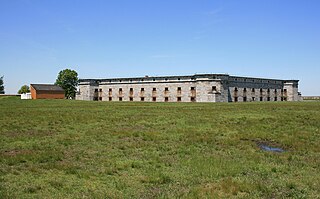 W
WThe Harbor Defenses of the Delaware was a United States Army Coast Artillery Corps harbor defense command. It coordinated the coast defenses of the Delaware River estuary from 1897 to 1950, beginning with the Endicott program. These included both coast artillery forts and underwater minefields. The areas protected included the cities of Philadelphia, Camden, and Wilmington along with the Chesapeake & Delaware Canal. The command originated circa 1896 as an Artillery District and became the Coast Defenses of the Delaware in 1913, with defenses initially at and near Fort Delaware on Pea Patch Island near Delaware City. In 1925 the command was renamed as a Harbor Defense Command. During World War II the defenses were relocated to Fort Miles on Cape Henlopen at the mouth of the Delaware Bay.
 W
WWilliam Frederick Hase was a Major General in the United States Army.
 W
WAndrew Hero Jr. was a major general in the United States Army who was prominent for his service as Chief of Coast Artillery.
 W
WThe U.S. Army Mine Planter Service (AMPS) was an outgrowth of civilian crewed Army mine planter ships dating back to 1904. It was established on July 22, 1918 by War Department Bulletin 43 and placed the Mine Planter Service under the U.S. Army Coast Artillery Corps. Its purview was to install and maintain the underwater minefields that were part of the principal armament of U.S. coastal fortifications, including those at the approaches to the Panama Canal and the defenses of Manila Bay in the Philippines.
 W
WArthur Murray was a major general in the United States Army. He was notable for his service as Chief of Artillery, Chief of the Coast Artillery Corps and commander of the Army's Western Department.
 W
WThe Oozlefinch is the unofficial historic mascot of the Air Defense Artillery – and formerly of the U.S. Army Coast Artillery Corps. The Oozlefinch is portrayed as a featherless bird that flies backwards and carries weapons of the Air Defense and Coast Artillery, most often a Nike-Hercules Missile. Oozlefinch has been portrayed in many different forms and artistic interpretations through its history.
 W
WThe term Panama Mount describes a gun mount developed by the U.S. Army in Panama during the 1920s for fixed coastal artillery positions. Panama mounts were widely used during the buildup to and during World War II by the United States military.
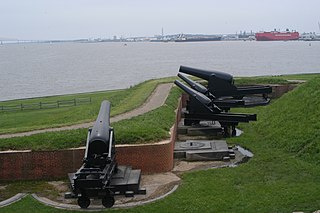 W
WSeacoast defense was a major concern for the United States from its independence until World War II. Before airplanes, many of America's enemies could only reach it from the sea, making coastal forts an economical alternative to standing armies or a large navy. After the 1940s, it was recognized that fixed fortifications were obsolete and ineffective against aircraft and missiles. However, in prior eras foreign fleets were a realistic threat, and substantial fortifications were built at key locations, especially protecting major harbors.
 W
WThe modern era of defending American harbors with controlled mines or submarine mines began in the post-Civil War period, and was a major part of US harbor defenses from circa 1900 to 1947.
 W
WErasmus Morgan Weaver Jr. was a United States Army Major General who served as the first chief of the Militia Bureau and the Chief of the Army's Coast Artillery Corps.